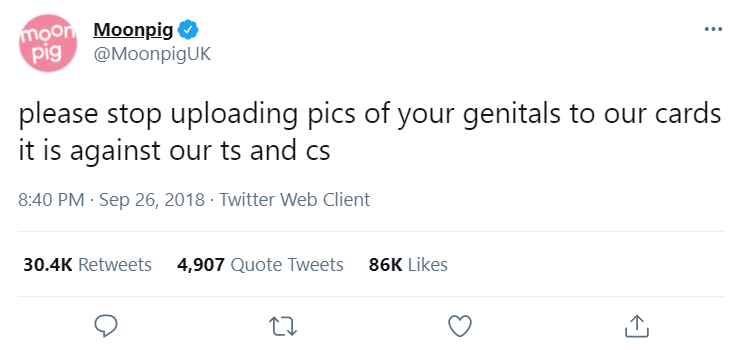Branding done right is powerful — it can create a lasting impression.
But miss the mark? And you could do your business real damage. Even the biggest and best companies rebrand because if you’re not moving forward, you’re standing still, right?
Rebranding gives organizations the chance to tap into a new voice, talk about what’s important to them and share their visions for the future. Consumer behavior patterns change constantly, so keeping tabs on them is essential to compete.
In this post, we’re sharing ten examples of great rebranding. Hopefully, they’ll inspire you to think about your own rebrand. As you’ll come to realize, big changes aren’t always necessary.
1. Uber
Uber revolutionized the ground travel industry, making way for the future of ride-hailing. And when they first showed up, their ride logo was big, bold, and authoritative. It was there to make a statement.
But now they’re known in 65 countries; it was time to soften their approach. The Uber branding we all know and love today is in title case with letters that are closer together. It’s more informal, personable, approachable, and universal, precisely what consumers want from a private hire service.
Uber wanted to continue drawing on the black color they’d become recognized for, alongside the use of bright white — which is interchangeable for logo use. This new approachable design was scalable and easy to understand in every country. Uber states three summary points for their logo are:
- Simplicity rules
- Consistent experience
- Embrace the power of black and white
2. Google
Although the mix of colors has mainly remained the same, Google’s logo history is a testament to the impact a font can have.
Over the last 23 years, the internet logo has gone through no less than seven iterations. But Google’s current logo, which has been their go-to since 2015, is simple. The colors are clear, and the font design is flat and uncomplicated. As time moves on, brands have begun to strip back the overcomplicated design features favoring simplicity.
This logo and its colors have become synonymous with the search engine giant. Now joining the logo family is the Google dots and the ‘G’ icon. This is a company that embraces innovation, so they’ve got to continue innovating all aspects of their brand, which they never fail to do.
3. Starbucks
We’re all familiar with Starbucks — there seems to be one on every corner! But in 2011, to mark their 40th anniversary, they made headlines after slightly altering their logo. Seems insignificant, right?
Wrong.
The coffee giant already had a large loyal following of coffee drinkers, so why would they risk changing anything?
Because they needed a scope to diversify and showcase the changes they were making as a company. The original cafe logo had the words “coffee” inscribed on it, pretty much pigeon-holing themselves as a coffee shop only. But they wanted the opportunity to make a name for themselves by selling other products.
Their new logo has no words, just the symbolic mermaid who first made their appearance in their very first logo back in 1971, keeping them tied nicely to their roots.
4. Old Spice
Perhaps one of the best rebrands ever. You’re no doubt familiar with Old Spice’s recent work over the last ten years with the introduction of “the Old Spice guy” and comical adverts that make you smile and remember the brand fondly.
But they did more than overhaul their advertising strategy — they revamped everything.
They had a new logo designed, they altered their product packaging, and they adapted their strategy to appeal to a younger demographic, mainly millennials, both male and female. Just one year later, they reported a 100% increase in sales. Now that’s a successful rebrand.
5. Tinder
The dating app that boasts over 50 million active users decided to level up its branding back in 2017. And by level up, we mean strip-back, which seems to be a trend slowing down for no one.
Tinder stripped back its logo to reveal the (now) iconic flame. They redesigned the flame to appear wider, more rounded and added a gradient color — not unlike Instagram’s new logo only revealed the previous year.
The new icon means users can identify Tinder quickly and easily in the app store. With so many apps out there (particularly dating apps) vying for user attention, making your brand stand out has become more difficult. The new logo looks more balanced, vibrant, and eye-catching.
6. Medium
The online publishing platform has changed its branding many times in a relatively short period. In October 2020, Medium unveiled a new visual identity.
Medium founder Ev Williams spoke to the creative platform It’s Nice That and stated that the platform would be changing to support dialogue between readers and writers, to become a more “intentional and relational network of ideas exchange.” As part of a massive evolution of its approach, the platform decided a rebrand was to “better express the brand” and make it more flexible. It’s good to see brands reflecting what their users want!
7. Moonpig
The old Moonpig branding had a pig in a space helmet — pretty descriptive of the company name itself. But they ditched the cartoon logo in 2017 for a simplistic logo and a cheeky tone of voice.
This tone of voice has set them apart from competitors, engaged their demographic, and given them weight across social media platforms. This rebranding is an excellent example of what being brave and bold with your ideas can do for you.
Source: Twitter
8. Airbnb
They’re known for revolutionizing the travel industry with a unique business model. But do you remember the original Airbnb logo? It was in a bubble-like font with a blue outline. Fast-forward to today, and the brand is now synonymous with its current logo. Clean, red — a symbol of belonging, an icon they call Belo.
Airbnb CEO Brian Chesky spoke with DesignStudio, who orchestrated their rebrand, stated they wanted an icon that anyone could draw and worked across every touchpoint. When you stay in an Airbnb, it’s supposed to feel like you belong there. You’re not supposed to feel like a tourist. This rebrand saw Airbnb overtake other hospitality brands and transform into a multi-billion dollar company.
9. Deliveroo
In September 2016, Deliveroo unveiled a brand new, sleek identity. This wasn’t just a straightforward logo change; it included a cycling kit for Deliveroo drivers (designed with road safety charity, Brake).
The logo became stripped back but still features a kangaroo graphic, nodding to the original branding. The logo was designed so it could work across all platforms, from billboard advertising to favicons.
The aim was to deliver brand consistency across the 12 markets they serve, which it unquestionably delivers on.
10. McDonald’s
Famed for its “Golden Arches,” McDonald’s has gone through a fair few yellow logos in its time. But in recent years, they adopted a different advertising approach.
People made off-the-cuff remarks about the food’s quality and its unhealthy nature. Users jibed that the burgers had barely any meat in them and were an unhealthy fast food option.
McDonald’s hit back with an emphasis on quality, a focus on their 100% beef burger adverts, and an insight into where they source their food. They also offered healthier alternatives, including fruit bags and salads.
They heard what people said about them and made proactive rebranding campaigns to counteract those negative comments. Listening to and educating your audience is an essential aspect of building a brand with values.
Hopefully, you’ve realized you don’t have to make big changes to create an impactful brand. Tweaking your logo, revamping your branding colors, or creating a new and consistent tone of voice for your organization can be enough to attract the attention of your target audience.
Good luck with the rebrand!
Read more articles on design and inspiration:
Written by DesignCrowd on Thursday, March 4, 2021
DesignCrowd is an online marketplace providing logo, website, print and graphic design services by providing access to freelance graphic designers and design studios around the world.


